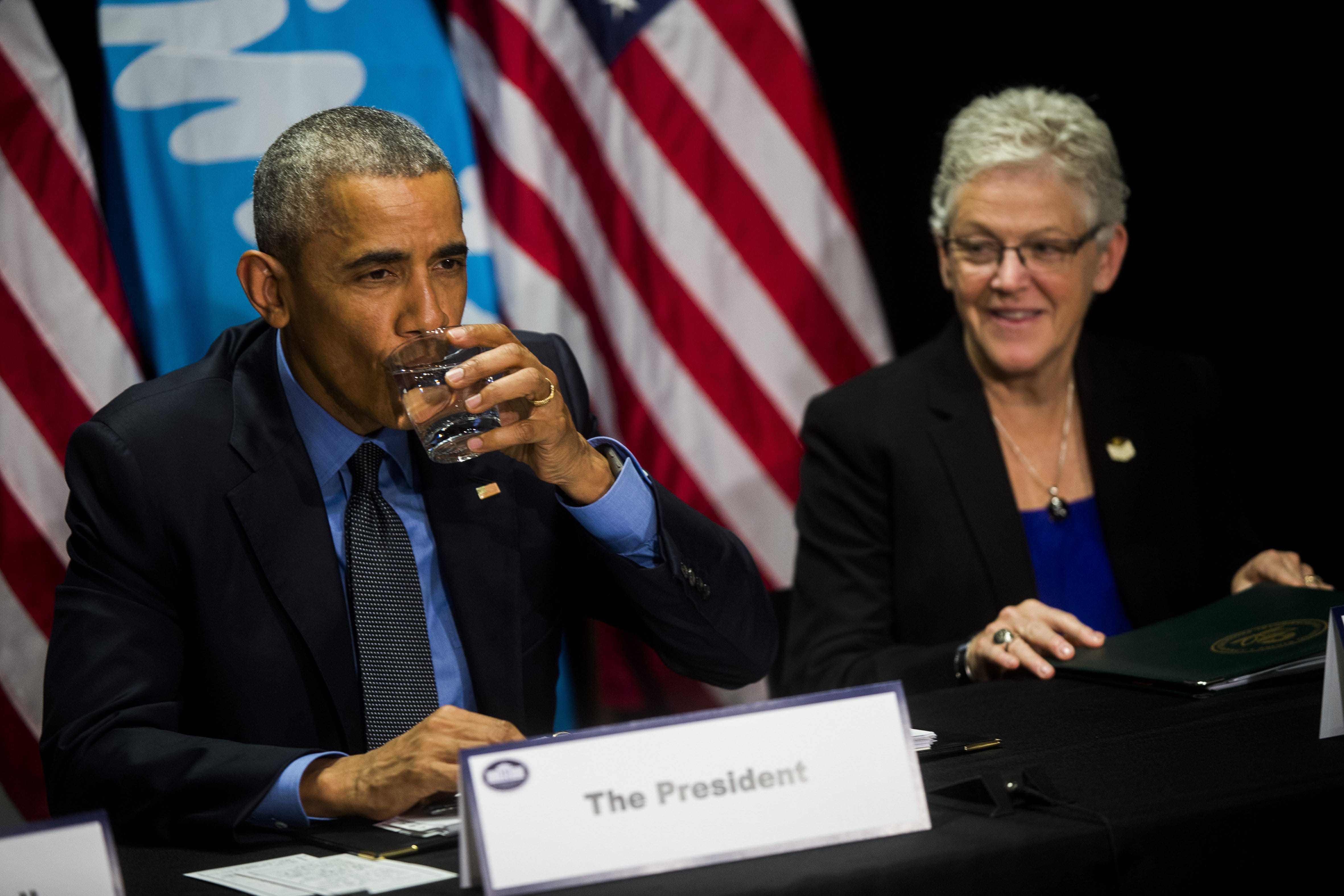FLINT, Mich. — Sipping filtered city water to show it’s again drinkable, President Barack Obama promised Wednesday to ride herd on leaders at all levels of government until every drop of water flowing into homes in Flint, Michigan, is safe to use.
He promised residents that the aging pipes that contaminated the water with lead will be replaced, but cautioned that the project will take time.
“It’s not going to happen overnight, but we have to get it started,” Obama told hundreds of people gathered at a high school. Obama spoke after he was briefed on the federal response to the water contamination and had met privately with nine residents.
Obama said he understands why people are scared and angry and feel let down. He said what happened in Flint was a manmade disaster that didn’t have to happen. But he said it did happen and everyone must now work together to fix it.
“I’ve got your back,” Obama said. “I will not rest and I will make sure the leaders at every level of government don’t rest until every drop of water that flows to your homes is safe to drink, to cook with, to bathe in.”
He called providing safe drinking water a basic responsibility of government.
After coughing several times during his remarks, Obama asked for and drank from a glass of water. He also drank city water after getting a lengthy briefing on the crisis, which forced residents to spend months drinking, cooking and bathing with bottled water.
Obama declared a state of emergency in Flint in mid-January and ordered federal aid to supplement the state and local response. By then, however, the crisis was in full bloom.
It took several months for the nation to focus on the beaten-down city’s plight, raising questions about how race and poverty influenced decisions that led to the tainted water supply and the sluggish response. More than 40 percent of Flint residents live in poverty and more than half are black.
In an effort to save money, the city, while under state management, began drawing its water from the Flint River in April 2014. Despite complaints from residents about the smell and taste and health problems, city leaders insisted the water was safe. However, doctors reported last September that the blood of Flint children contained high levels of lead.
The source of the city’s water has been switched back to Detroit, but the lead problem still is not fully solved, and most people are drinking filtered or bottled water.
The political and legal fallout is ongoing. An independent commission appointed by Republican Michigan Gov. Rick Snyder determined the state was primarily responsible for the water contamination in Flint, and he issued an apology. The Obama administration’s response, through the Environmental Protection Agency, has also come under criticism from Snyder and some in Congress who say the EPA didn’t move with necessary urgency.
EPA Administrator Gina McCarthy told Congress that, while staff repeatedly urged the state to address the lack of corrosion controls, “we missed the opportunity late last summer to quickly get EPA’s concerns on the public’s radar screen.” An inspector general is investigating the EPA’s response.



